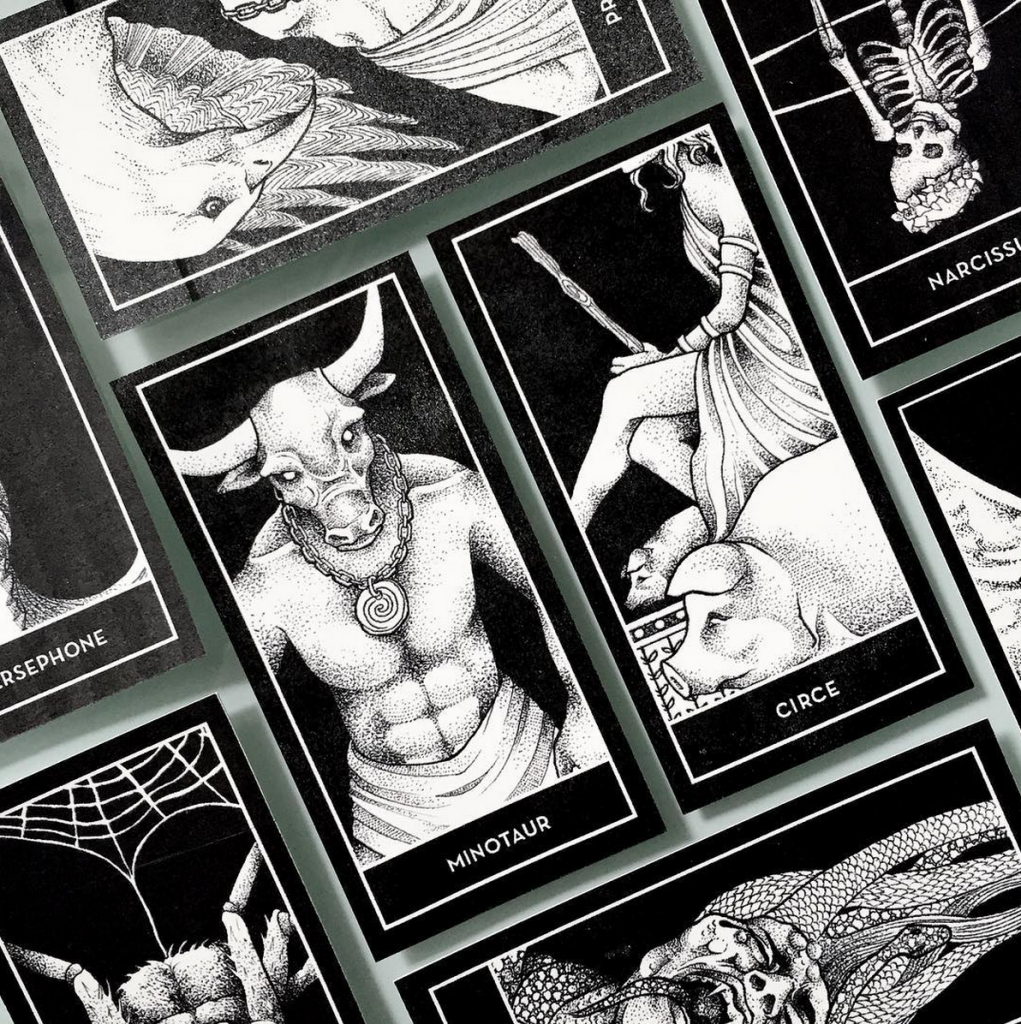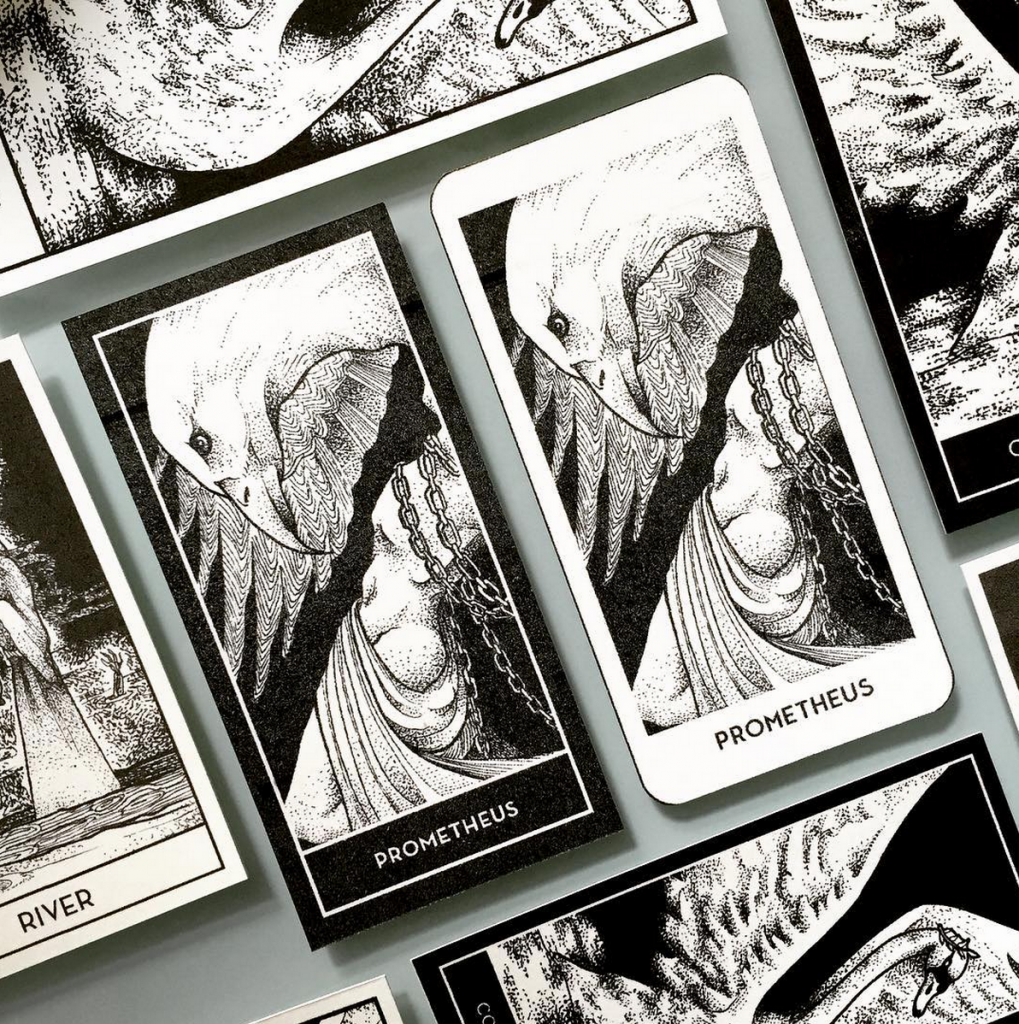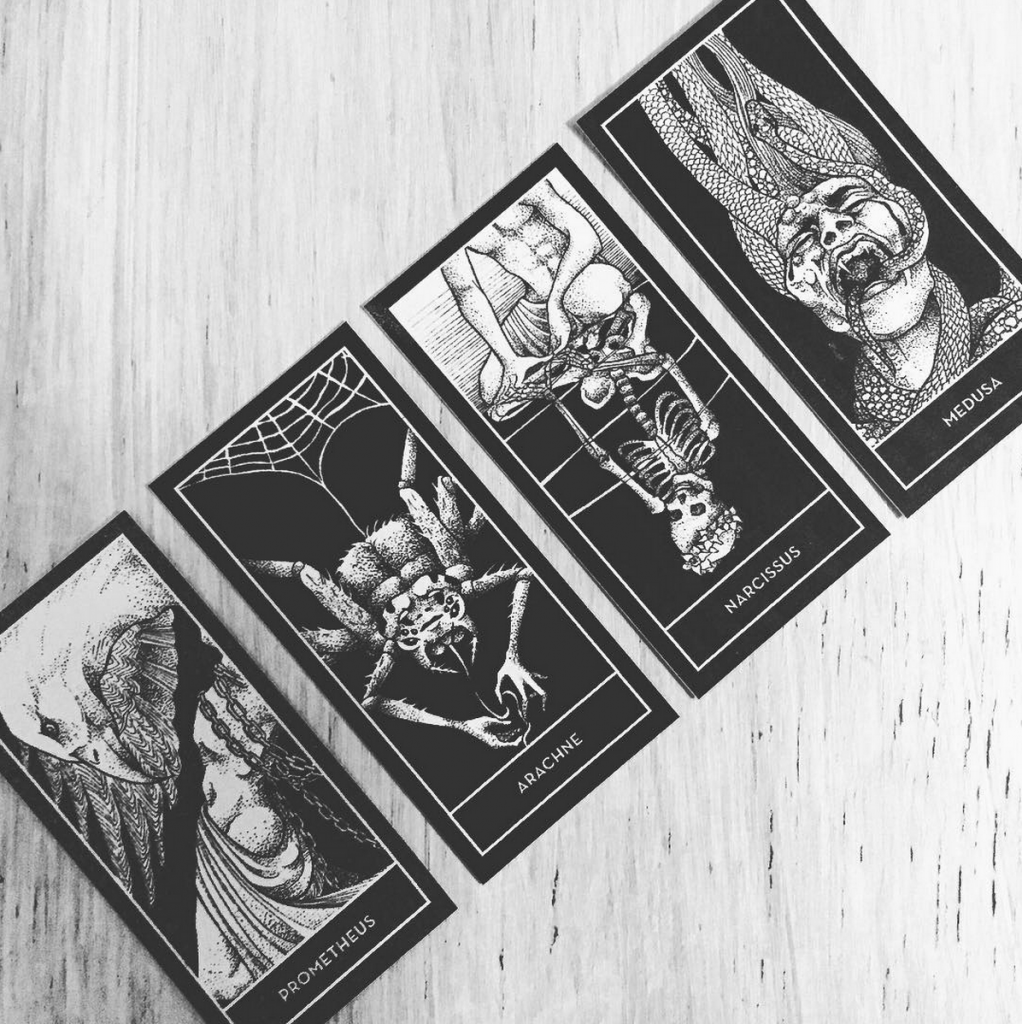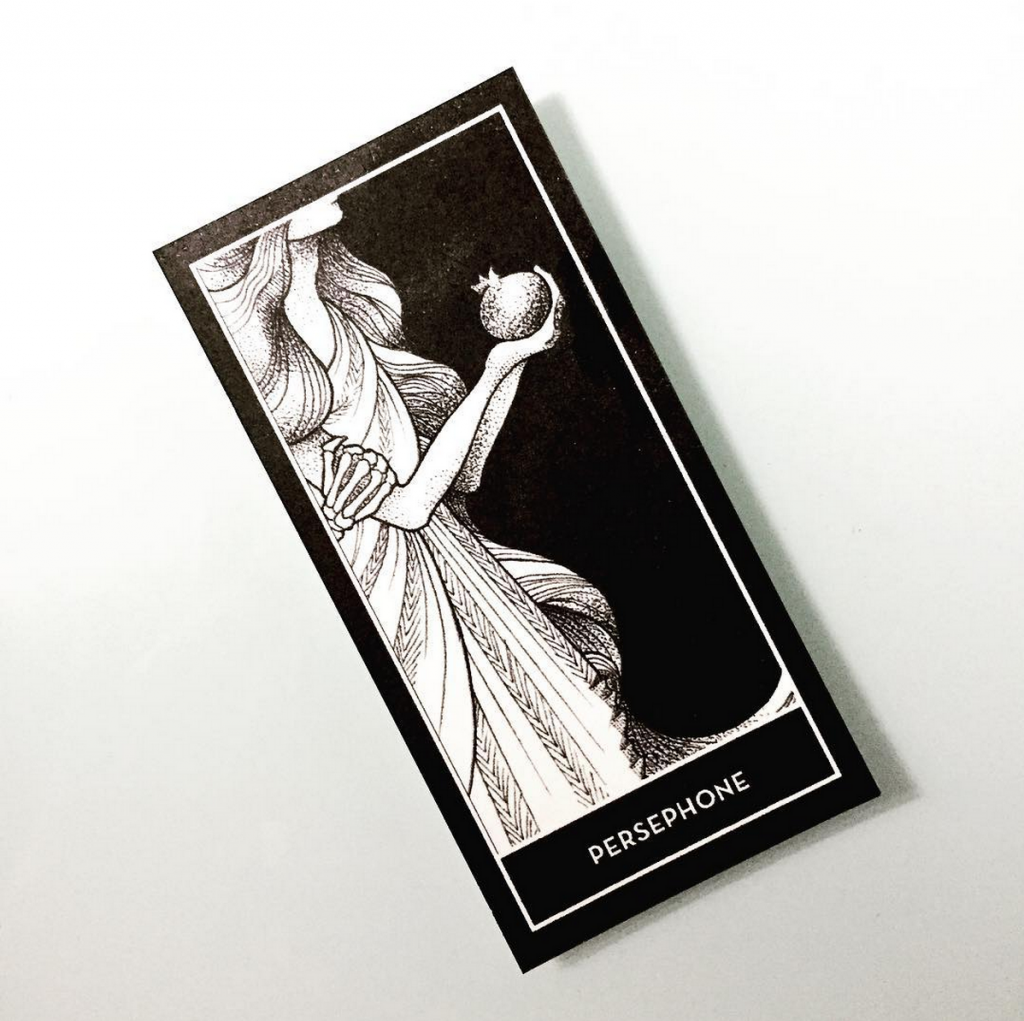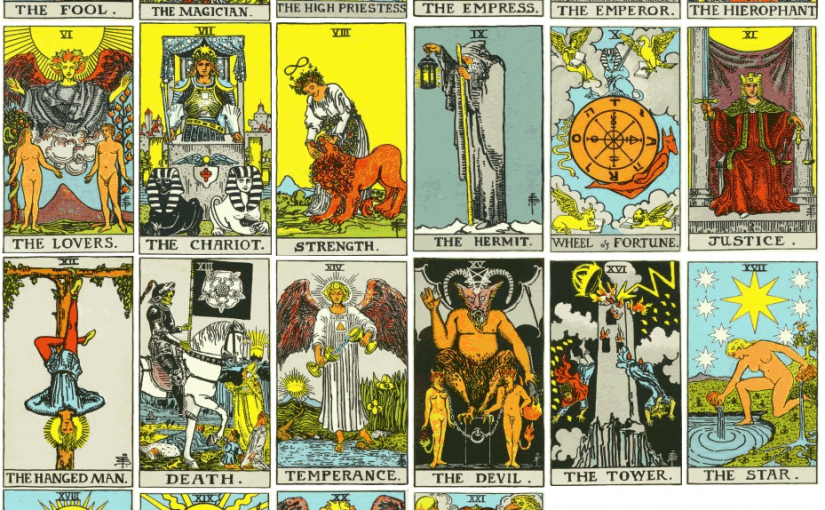Here’s the progress so far on my fortune-telling deck. I’ve been focusing on getting all the artwork out before attending to the structure of the deck and cards, because it’s the most intuitive way for me to work on my project. Having researched on various aspects of deck design over the past couple of days, I’ve come to certain conclusions about how to further stretch my project.
- First of all, I’m starting to look into card systems and deck structures in more detail. Yesterday I came up with a simple map for the Rider Waite tarot deck that I have at home. My rationale for doing this is that I don’t yet have a straight-up system I am using to build my deck. At this point I only have about ten cards so it’s not so pressing for now, but it’s a good time to be looking into what the deck structure is going to be like. Deck structures aren’t only common to tarot sets, but to regular old four-suit playing card decks and to trading card games. (I used to collect Neopets cards and they came with Heroes, Villains, Locations, Items, Equipment, and Something Has Happened cards.) As a kind of side project to my illustrations I’m trying to find different ways to map the decks that I have to get an understanding of and inspire some structure.
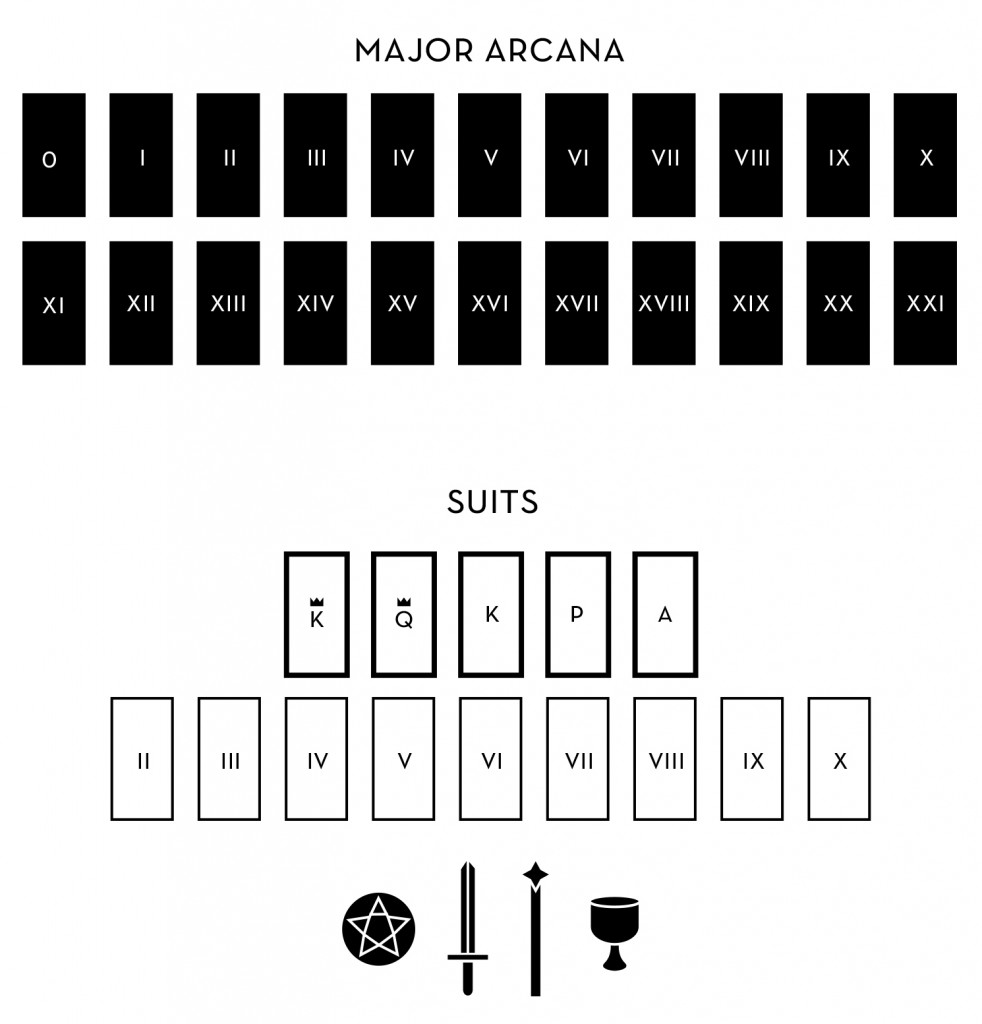 This isn’t really part of my final outcome, but it’s useful to do for my own reference and I can include it in my process too.
This isn’t really part of my final outcome, but it’s useful to do for my own reference and I can include it in my process too. - Building on the idea of structure, there’s a surprising amount of details that goes into the design of a single card. I’ve been using a single border and the same font (Neutra) for all of my cards just as an interim thing, but if you look carefully at these cards from the Zombie Tarot, you’ll notice that there are signifiers on the corners that tell you the value of the card and add to the zombie-themed design. In playing cards, every card needs to tell you its value and suit while being instantly recognizable and that’s something I want to incorporate into my deck. So far, I’ve been thinking of dividing my cards into two categories, Characters and Places. The initial idea here is to first deal a Place (i.e. Labyrinth, which could symbolize confusion/journeying), and then a Character card (or cards?), whose meanings would be read in the context of the larger Labyrinth meaning. (I should probably map this.)
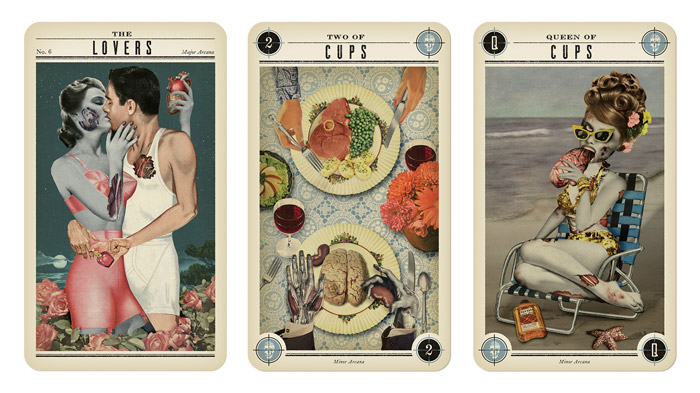
- In addition to card structures, there are also almost infinite spread structures (provided in books or on Pinterest) that are meant to give direction to the way you deal cards. I’ve been using a four-card spread for all of my own casual personal readings (I don’t take tarot that seriously but sometimes it’s useful for me because the phrasing of meanings inspires me sometimes) but there are more, and the Da Vinci deck that I have (which was also my first deck) offers a 12-card spread using the mandala-like card backs as part of the reading. You’re meant to tile the card backs in a way that means something to you, and turn the cards mirrorwise to read them after you’re finished. I thought that was a really creative way to add substance to a reading within in the structure of a themed deck. Speaking of card backs, I’m leaving the design for that till later.
